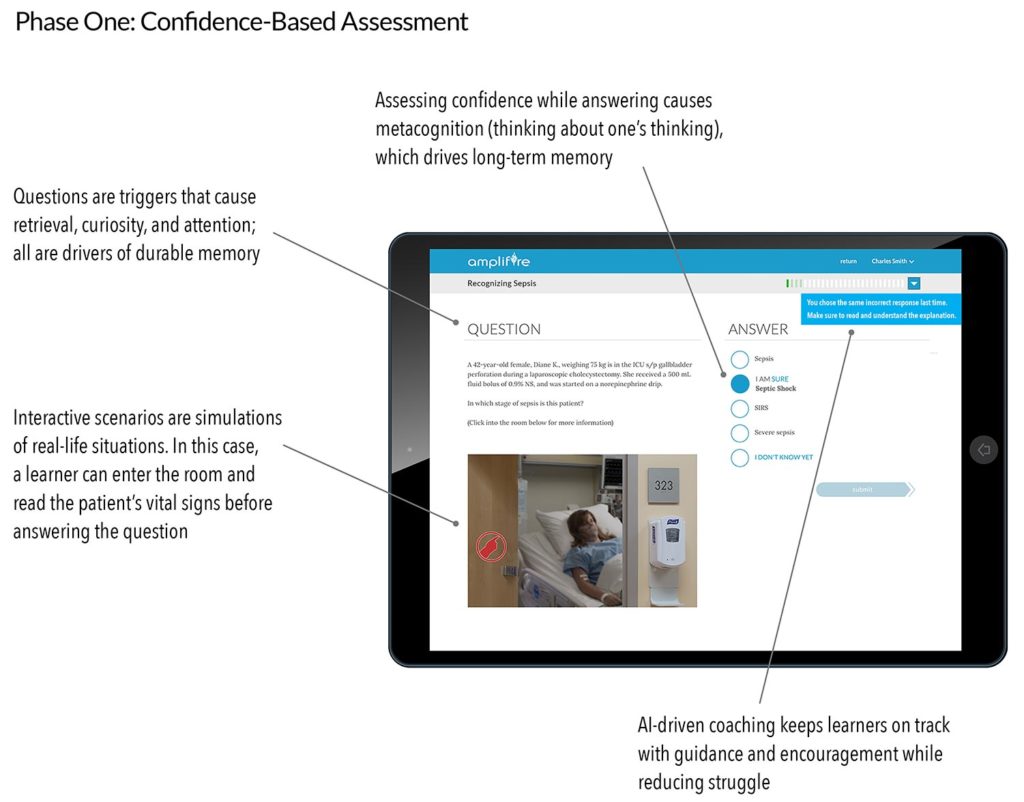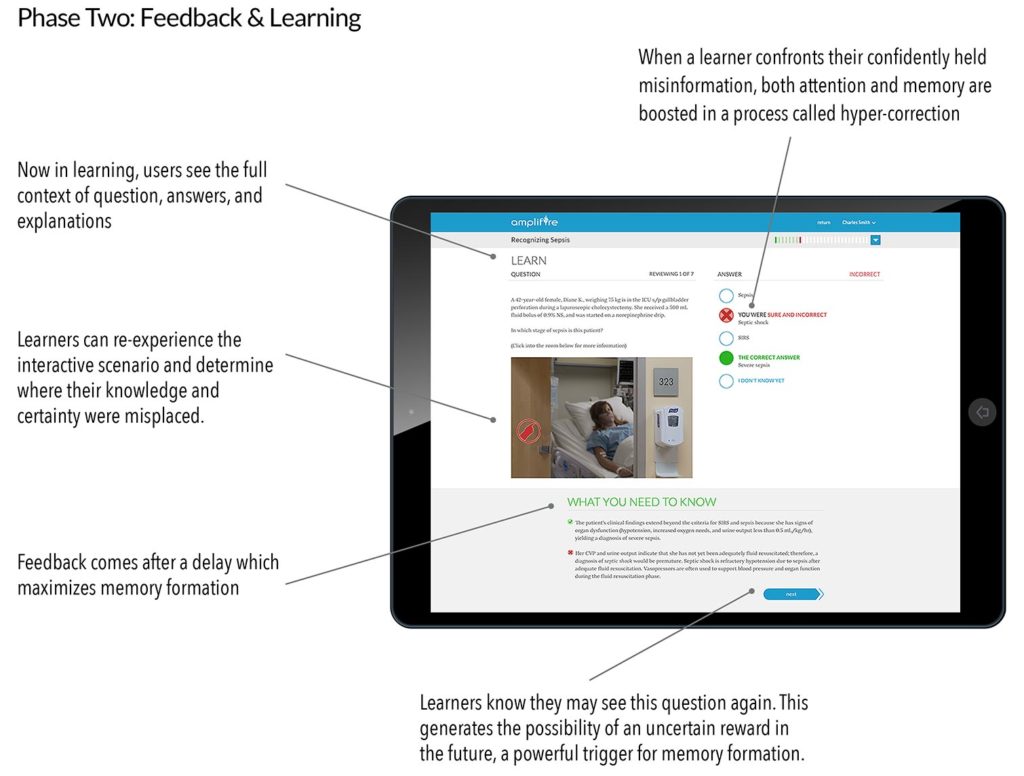Science-Driven Design
Learning in Amplifire begins with questions. Even if learners couldn’t possibly know the correct answer, research shows that this is the best way to make what they’re learning stick. This research was conducted by Matthew Hays and Robert Bjork, the chair of Amplifire’s Science Advisory Board (SAB).
Learners assess their confidence as they answer, which improves learning. Amplifire has patented a system in which confidence and answer choices are indicated simultaneously. Research by Elizabeth Bjork (also on our SAB) has shown that other approaches provide no benefit.
Interactive exercises further improve both memory for the material and transfer to other tasks. Much of the work in this field has been conducted by Rich Mayer, another member of Amplifire’s SAB.

After a learner submits a response, they receive immediate feedback about their confidence and whether they selected the correct answer. Also at this time, algorithms that attend to how the learner is using Amplifire determine whether and how to guide the learner to use the system more productively. These game- like features and AI-driven coaching stem from research conducted by Chad Lane, a member of Amplifire’s SAB.
Other algorithms determine how long to wait to provide corrective feedback. Although counterintuitive, delaying feedback makes learning more efficient (according to research by Henry Roediger—also on our SAB).
Yet another algorithm determines whether and how long to wait to ask the question—or a different version of it—again. Based on research by neuroscientists like our SAB’s Dan Schacter and Kathleen McDermott, Amplifire modulates learners’ dopamine levels to keep them engaged and optimize their learning.
All this is happening behind our deceptively simple interface. Your brain responds like it’s playing a game. We could add blinking lights and cash-register sounds…but it wouldn’t make the learning any more powerful.
This is the tip of the iceberg. Reach out here and we’ll be happy to take you on a deeper dive.

